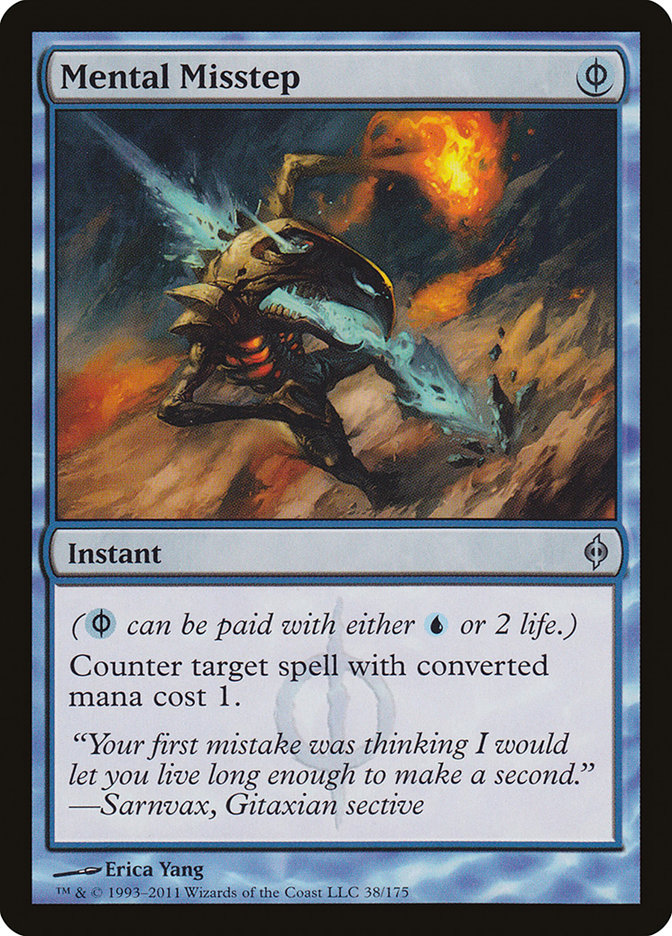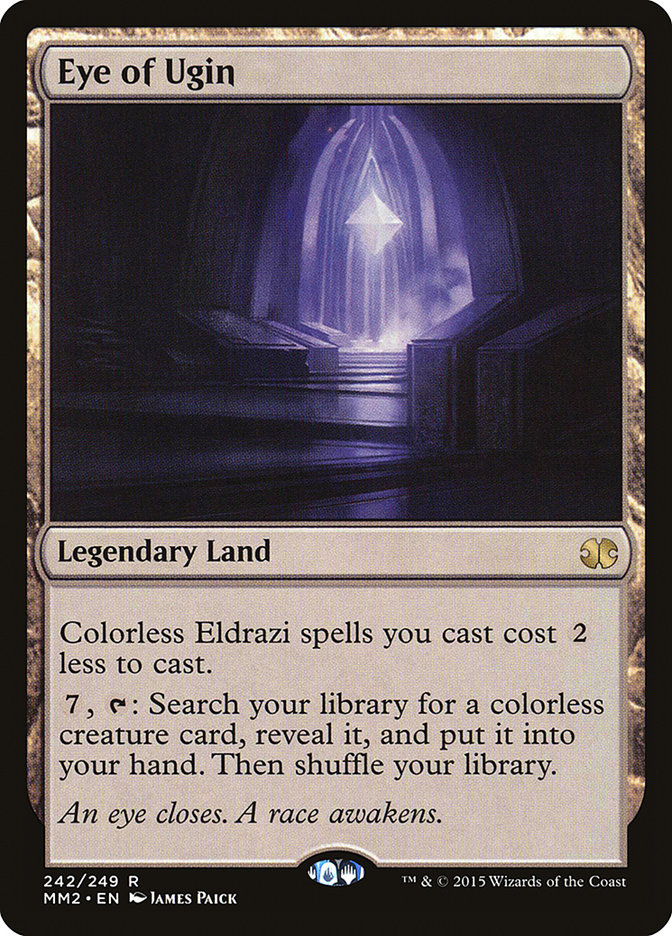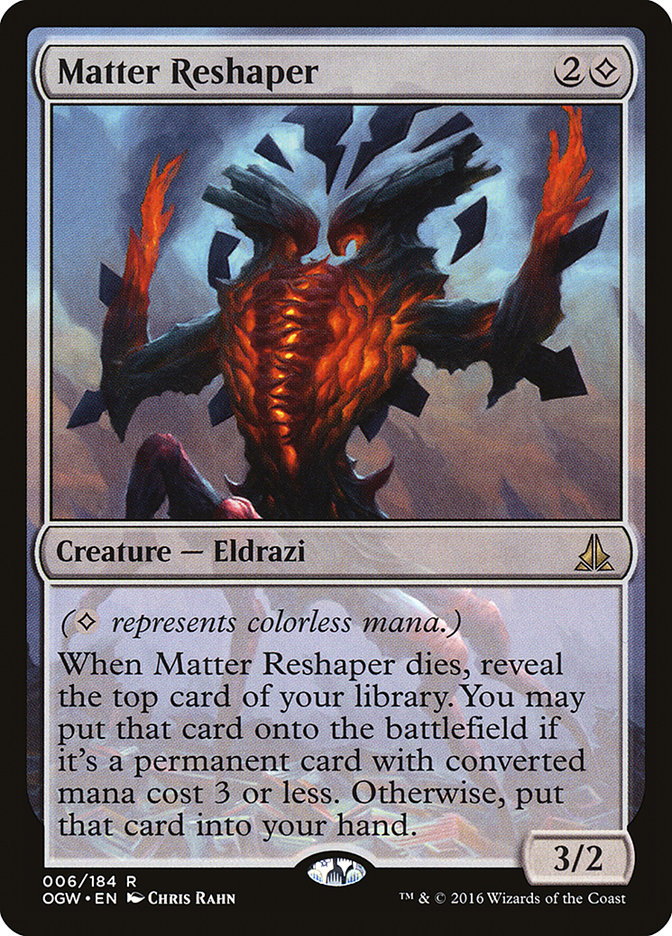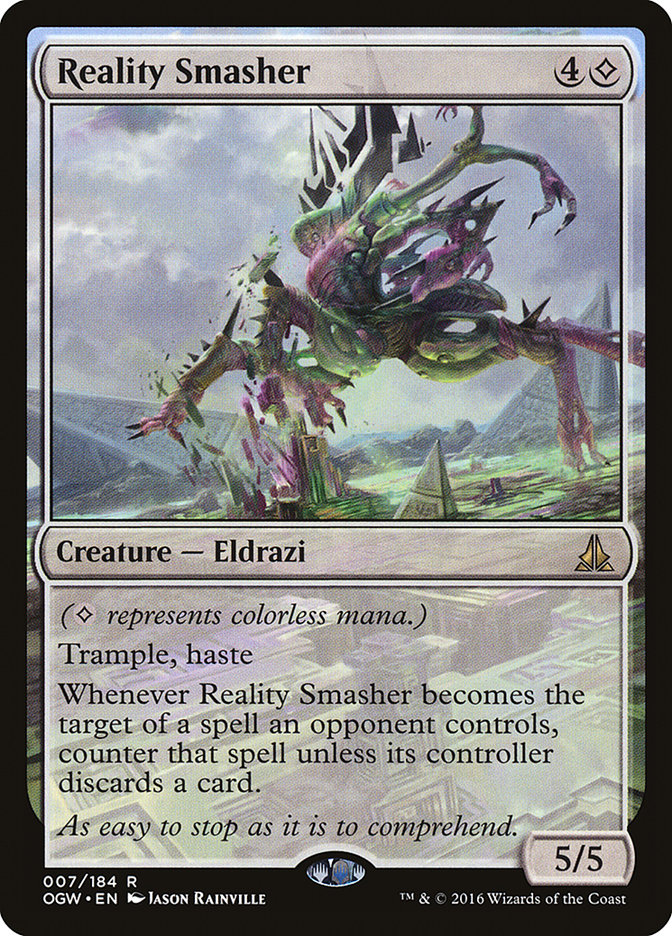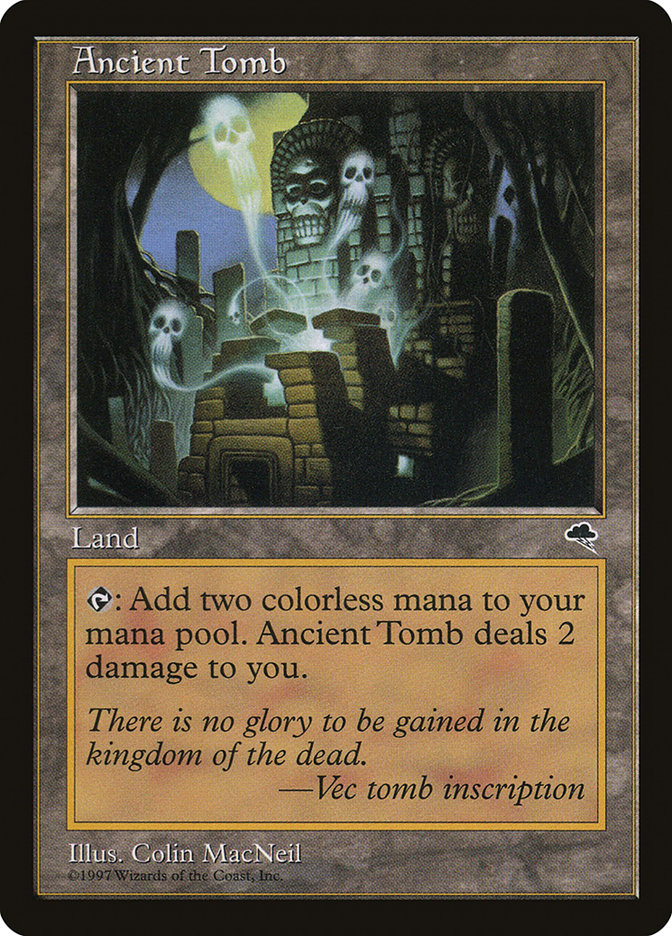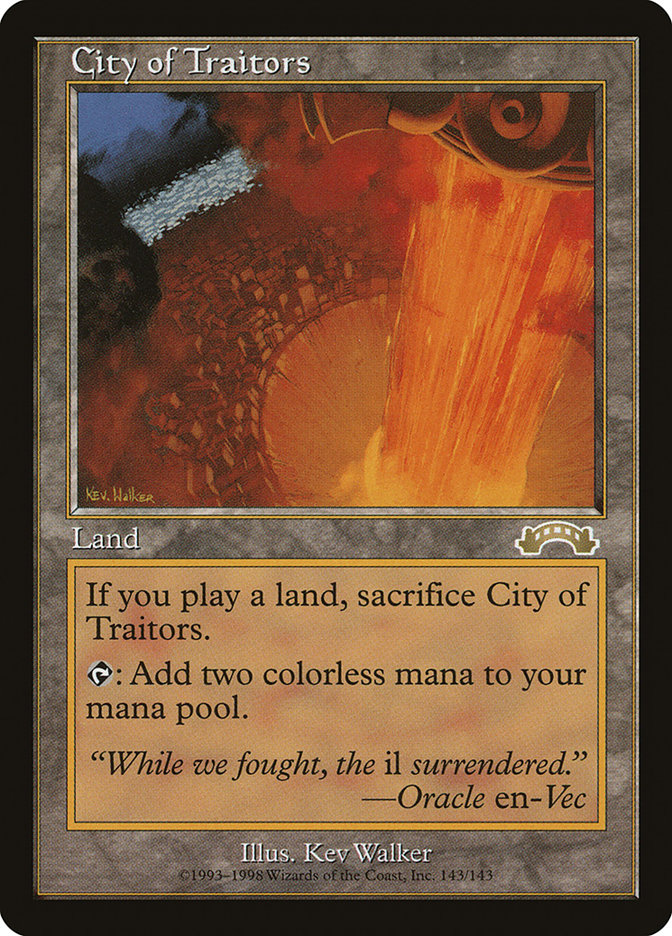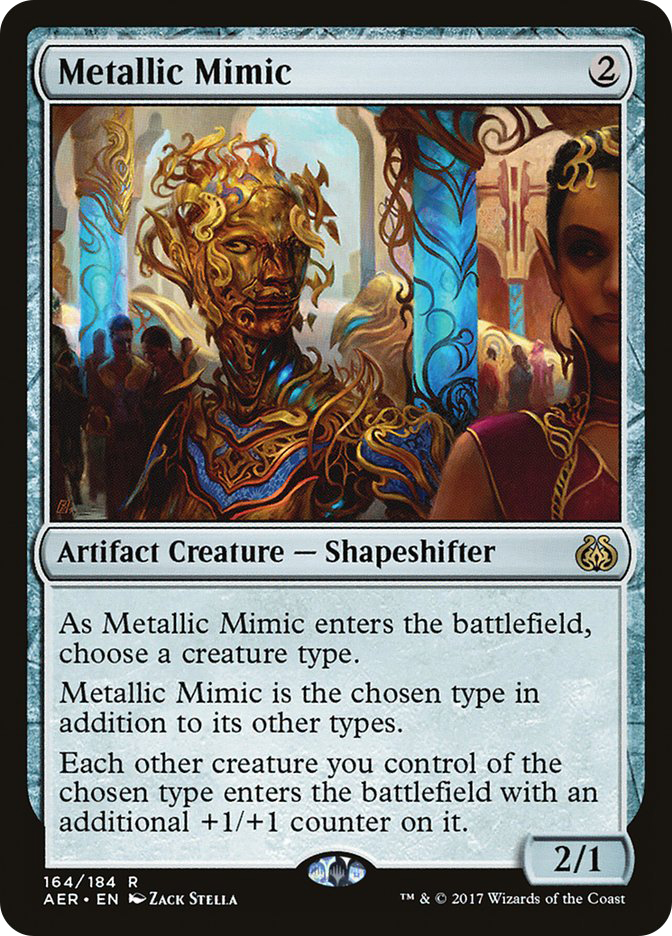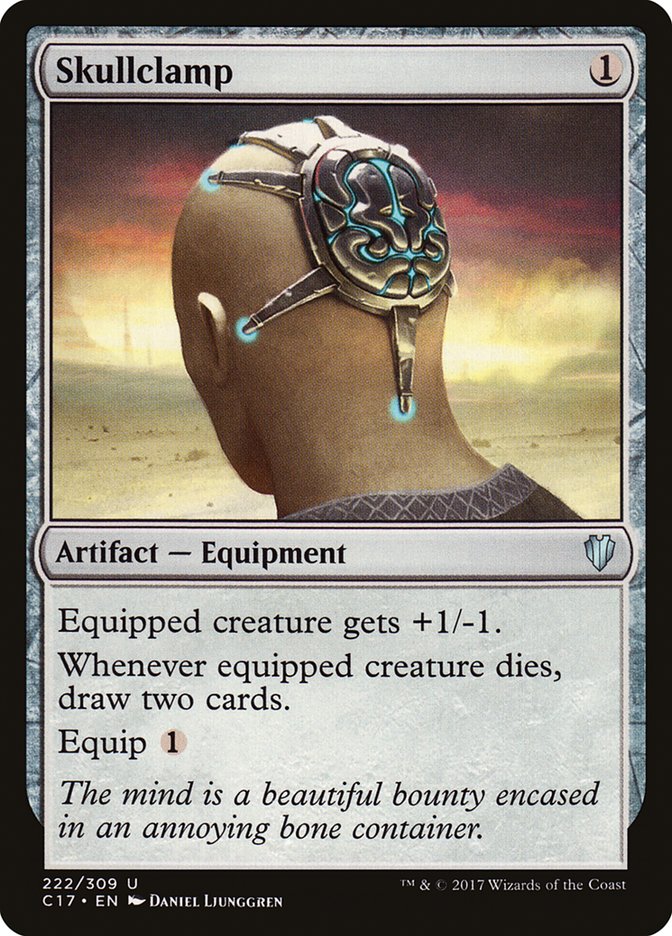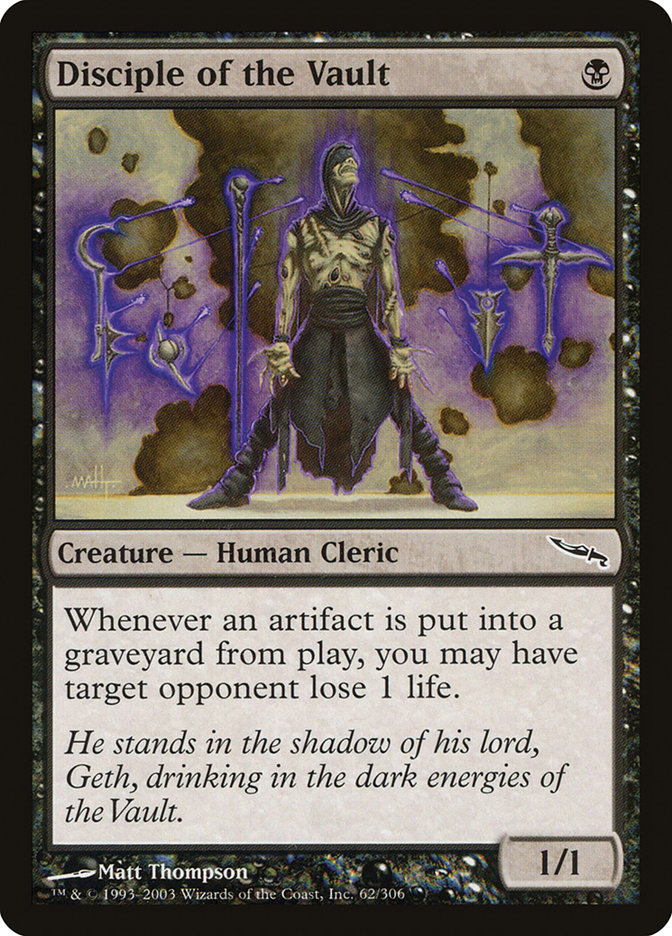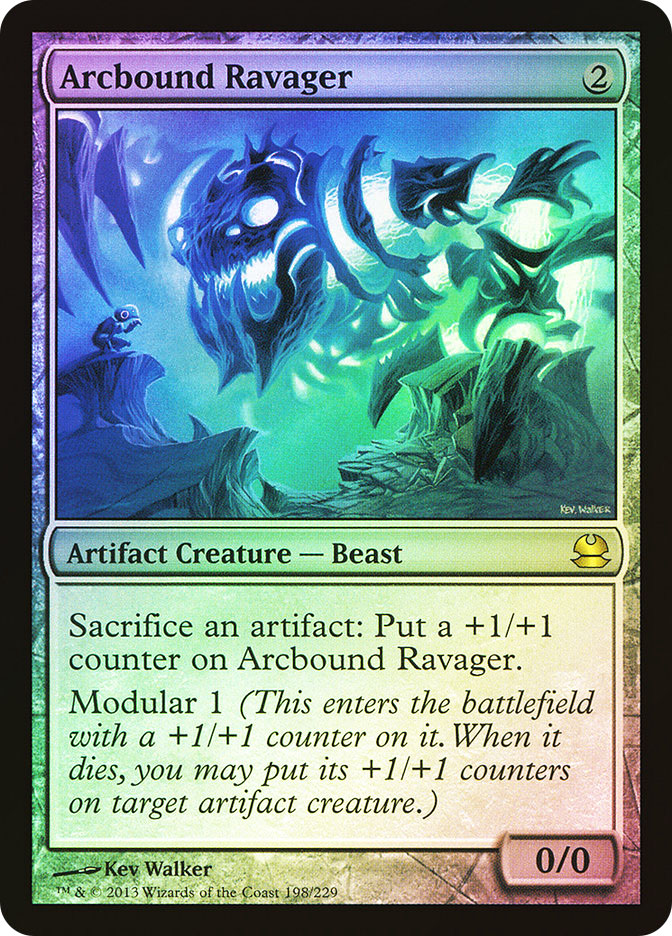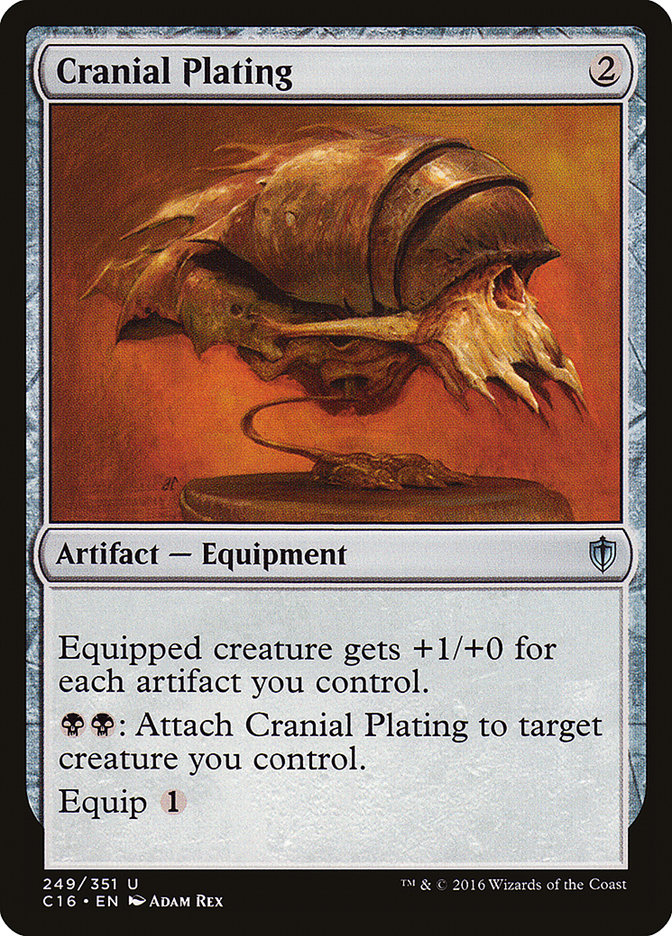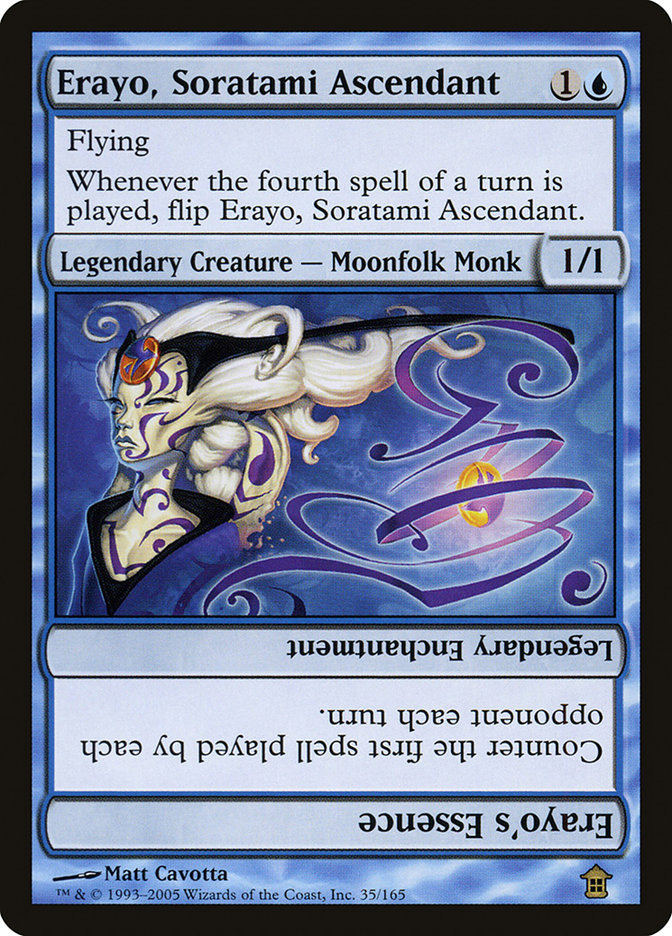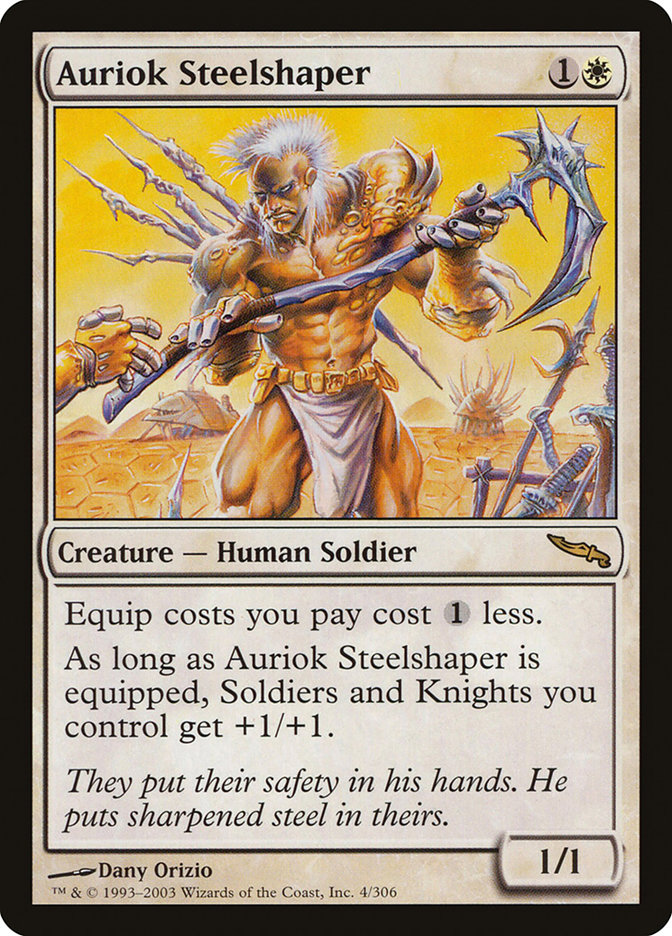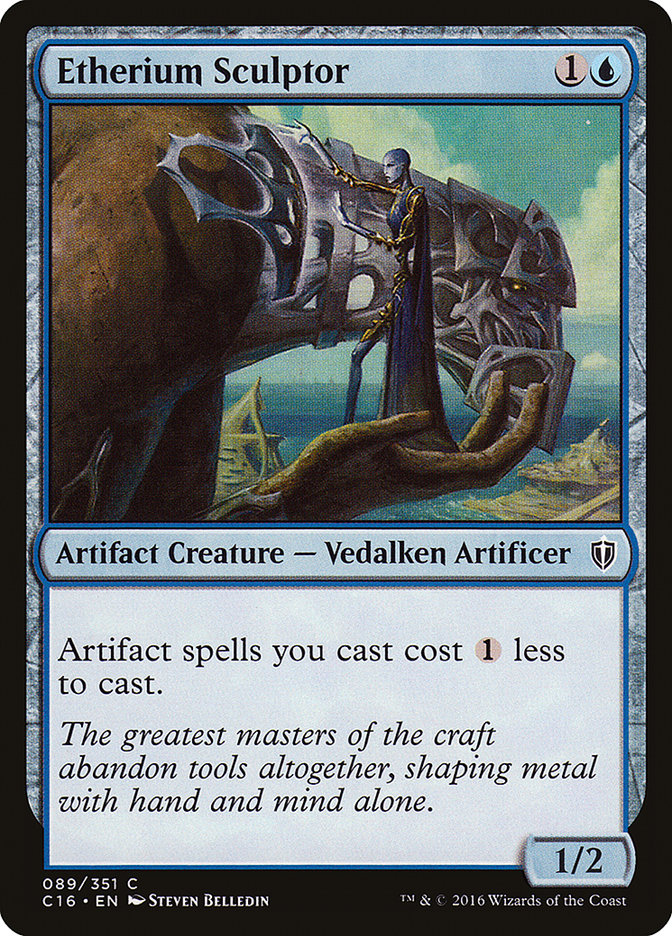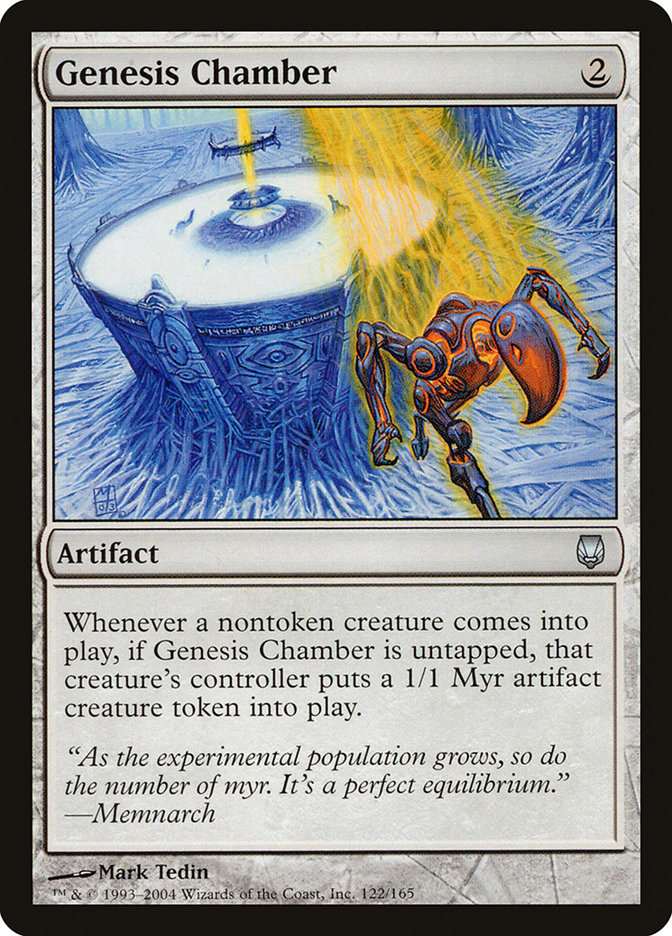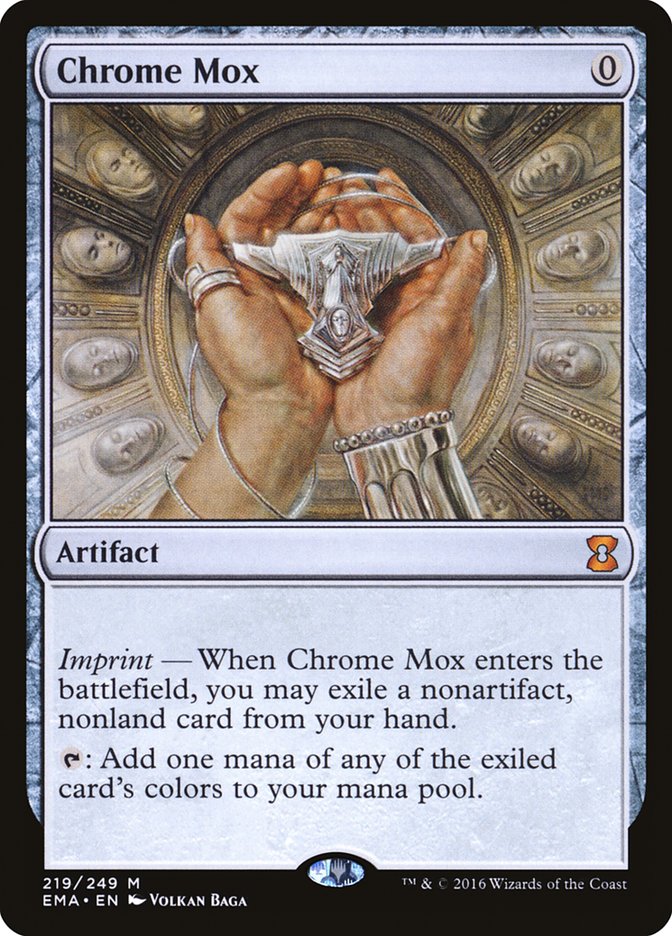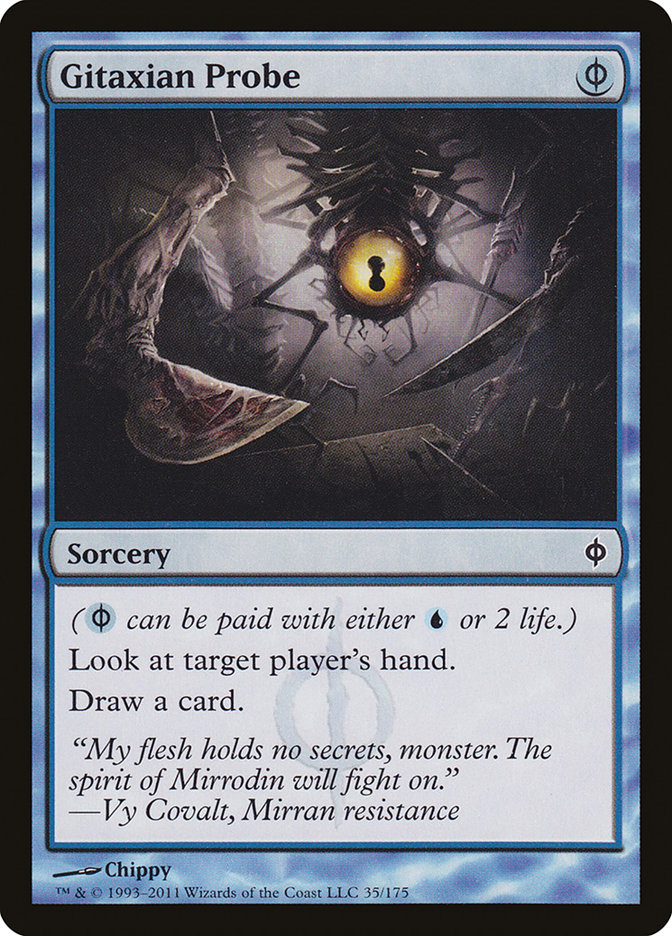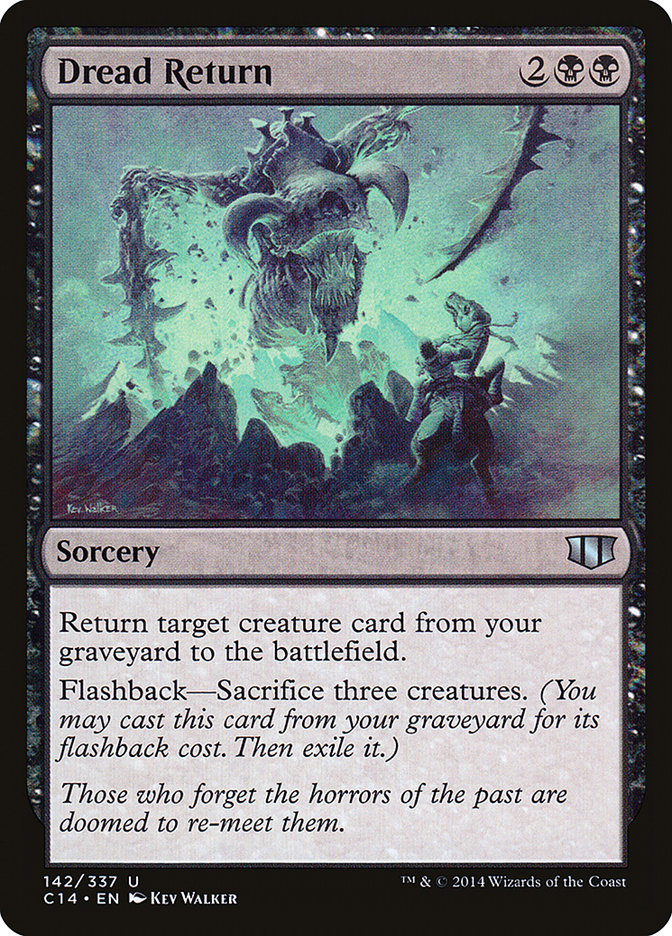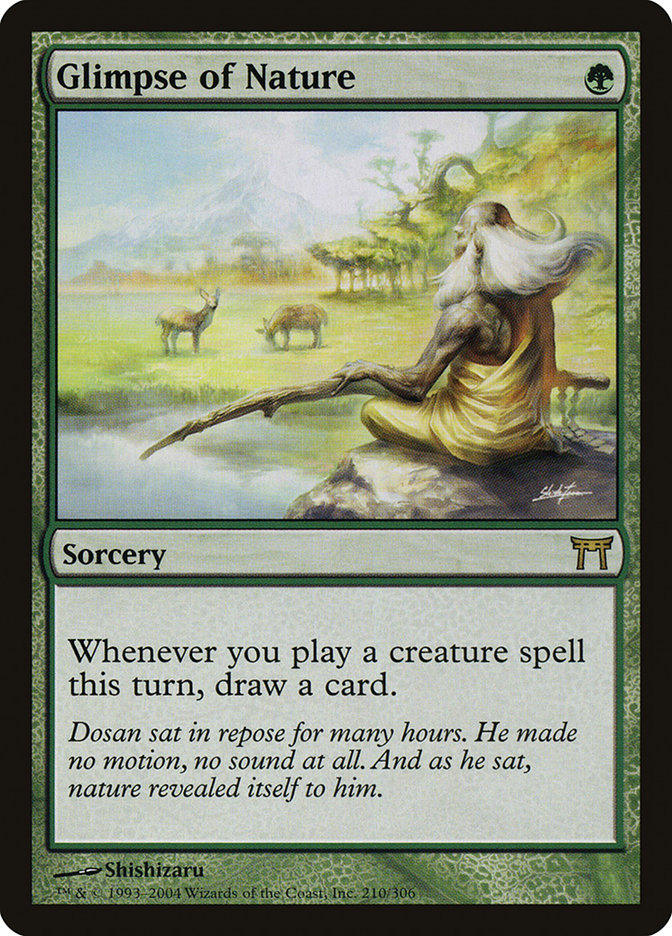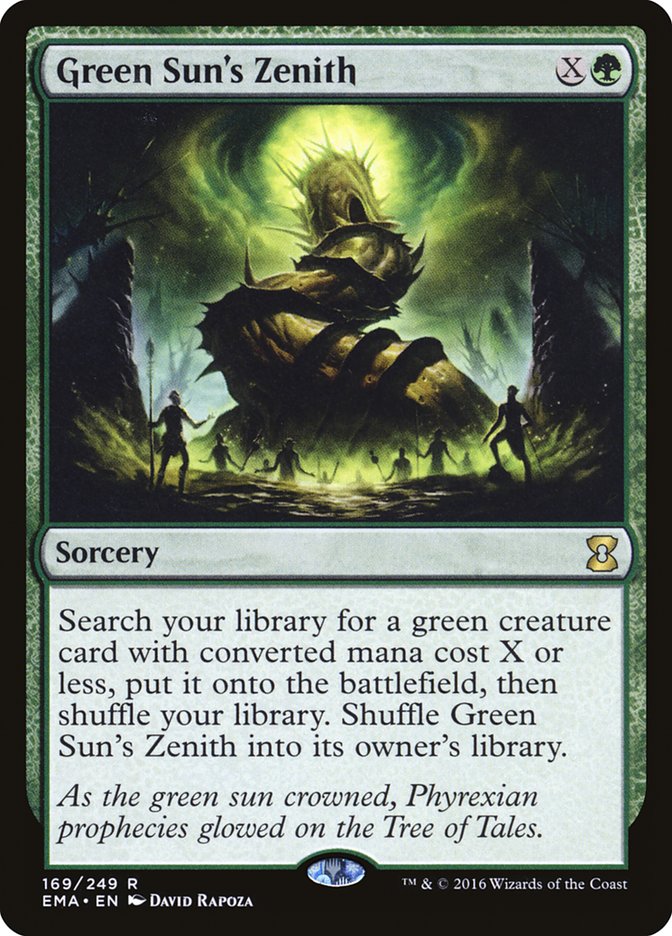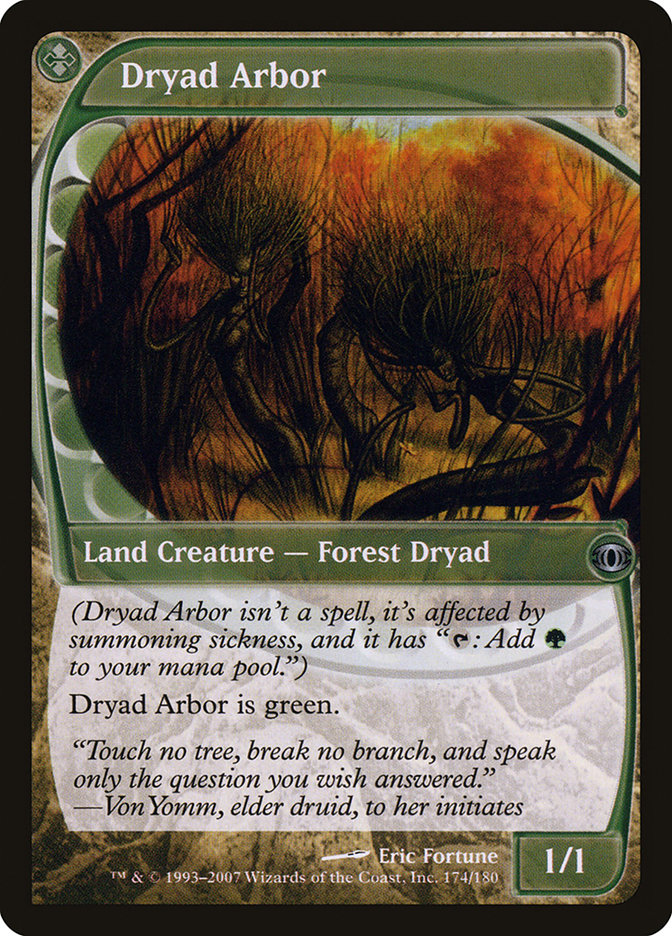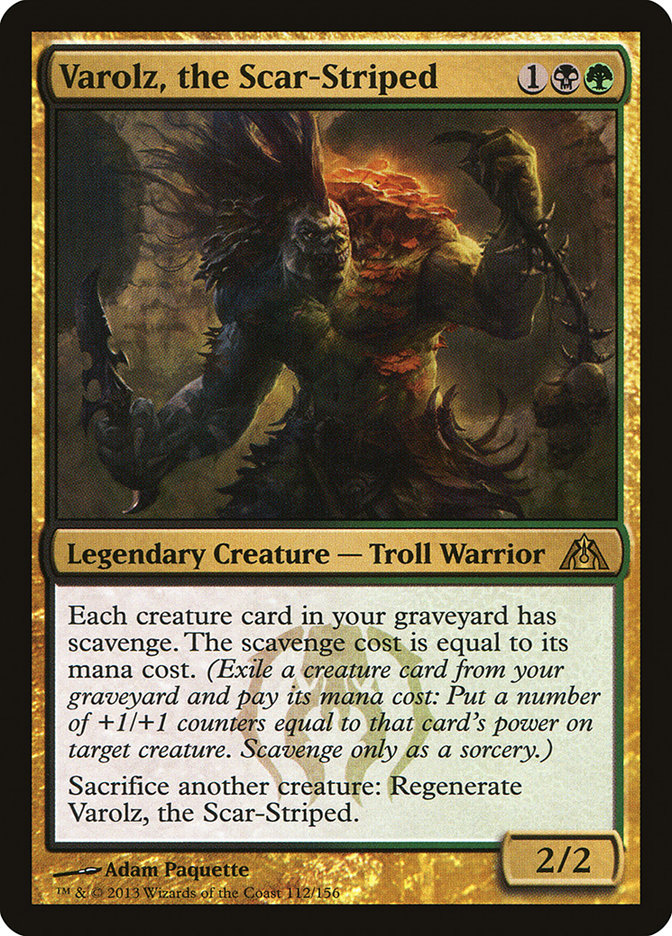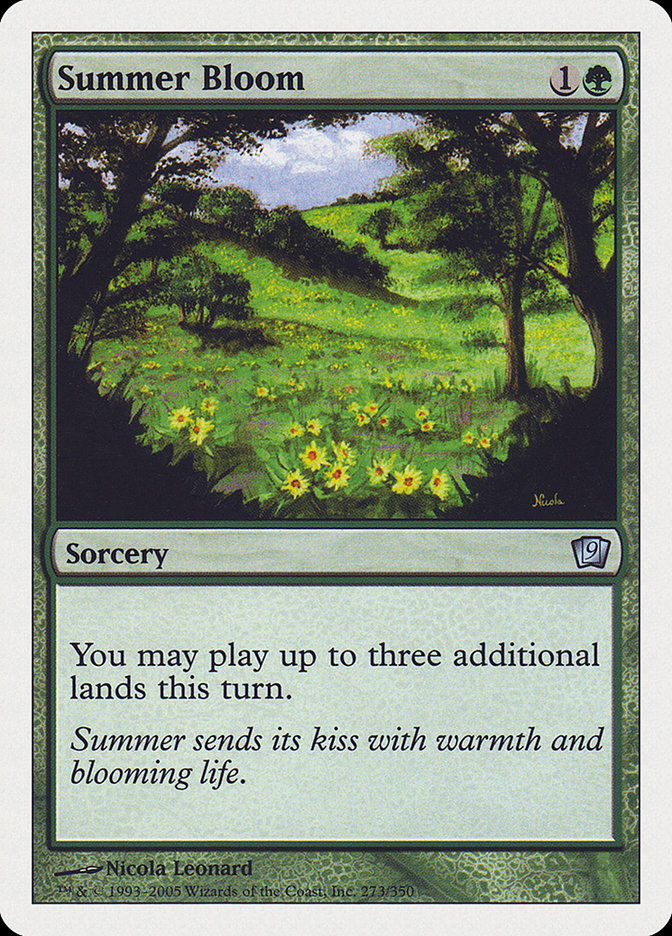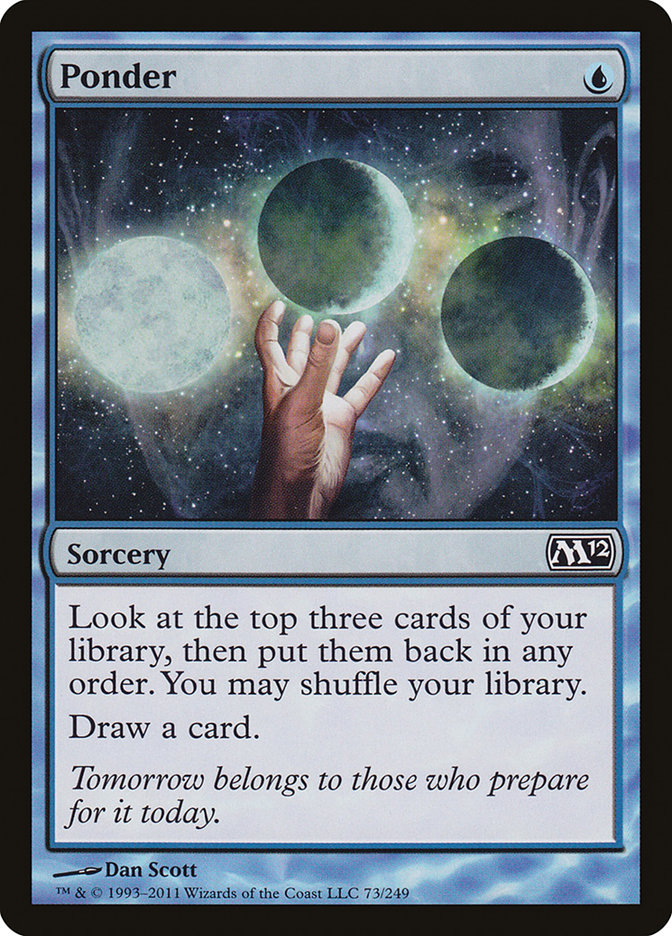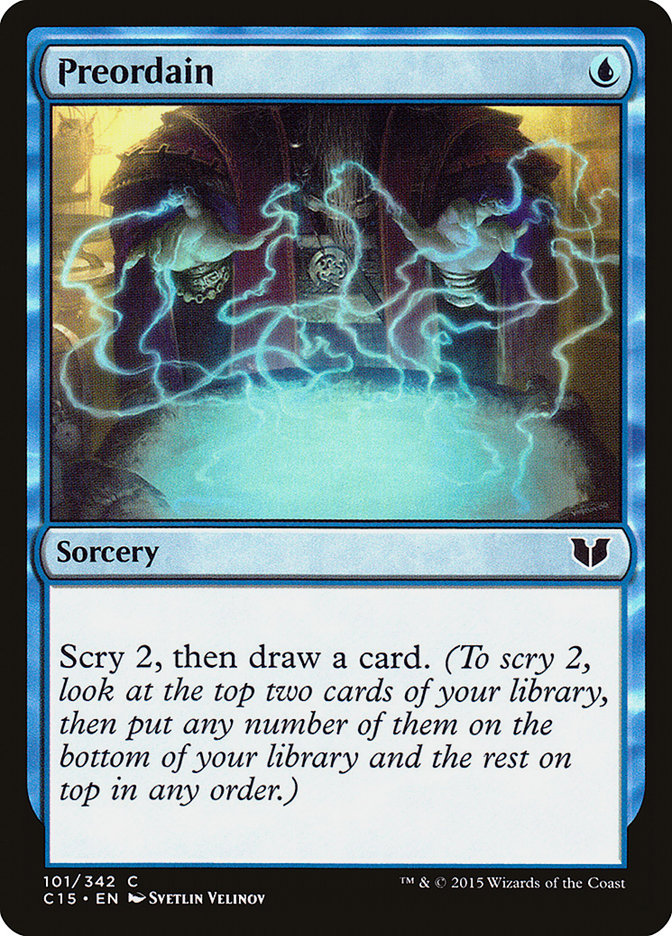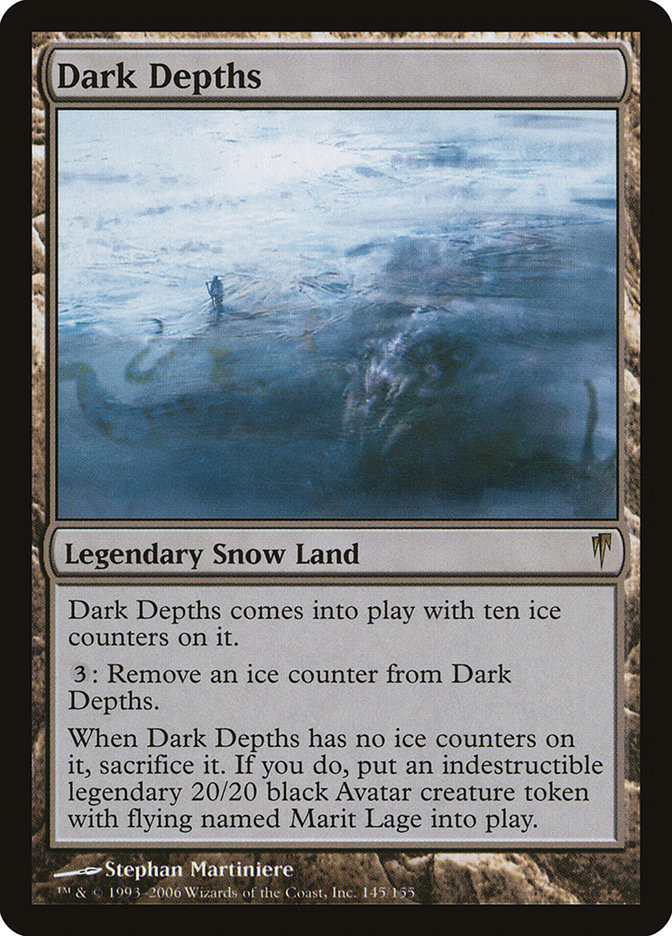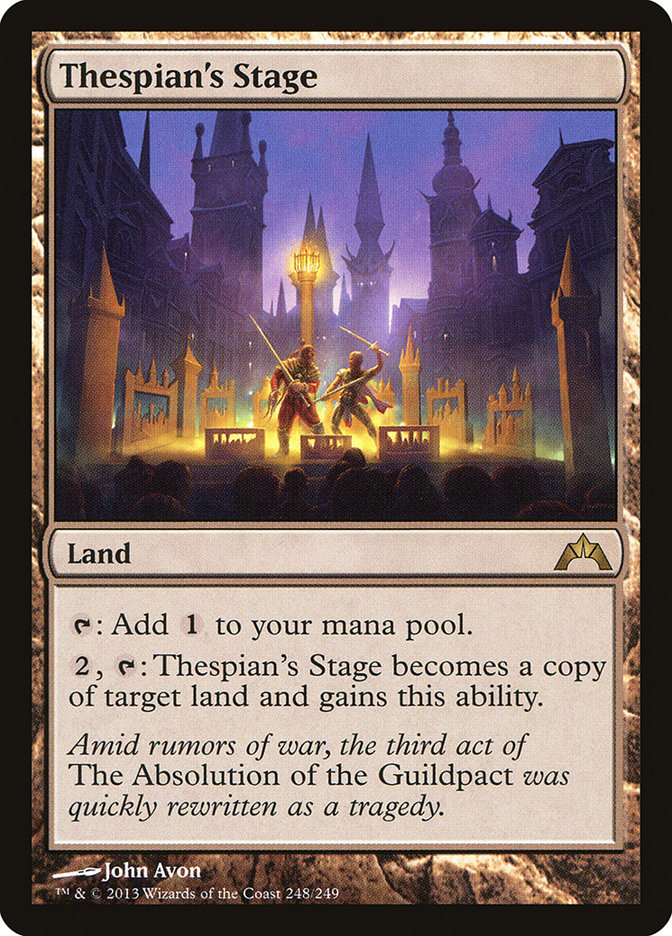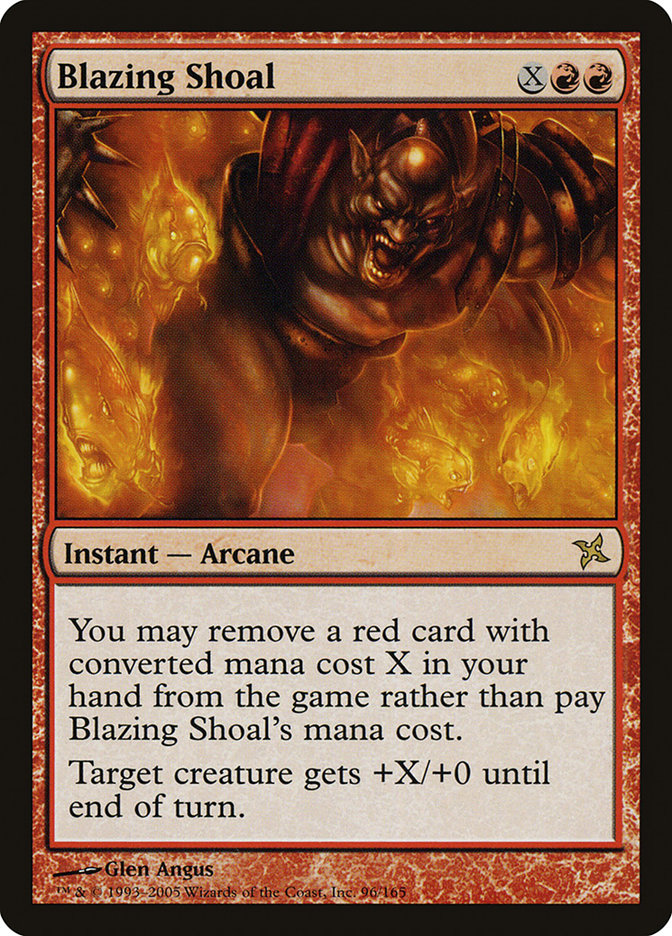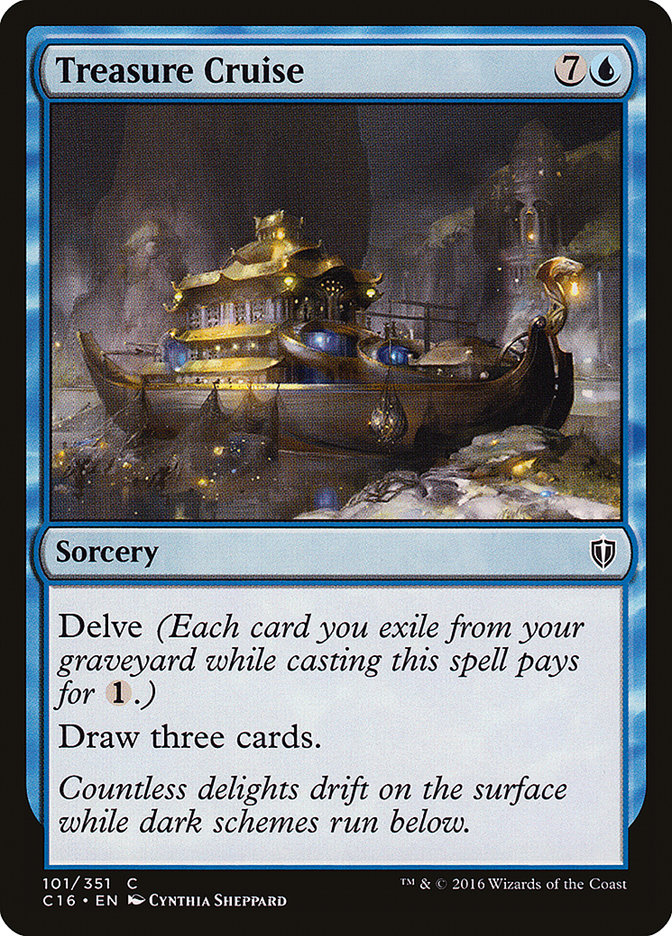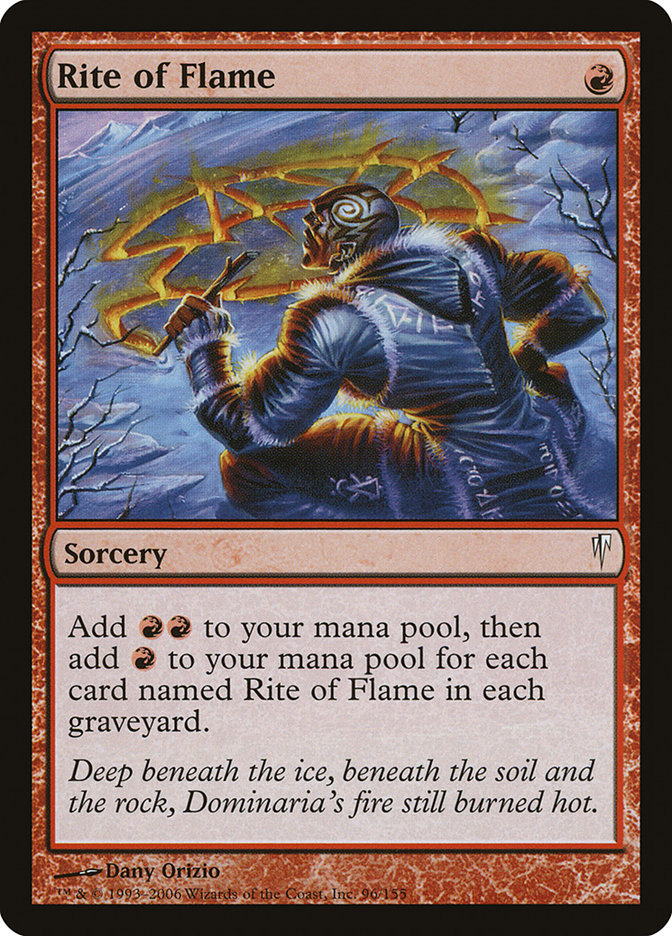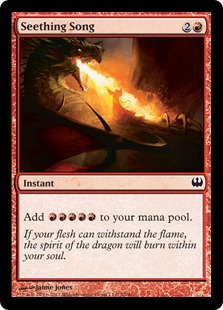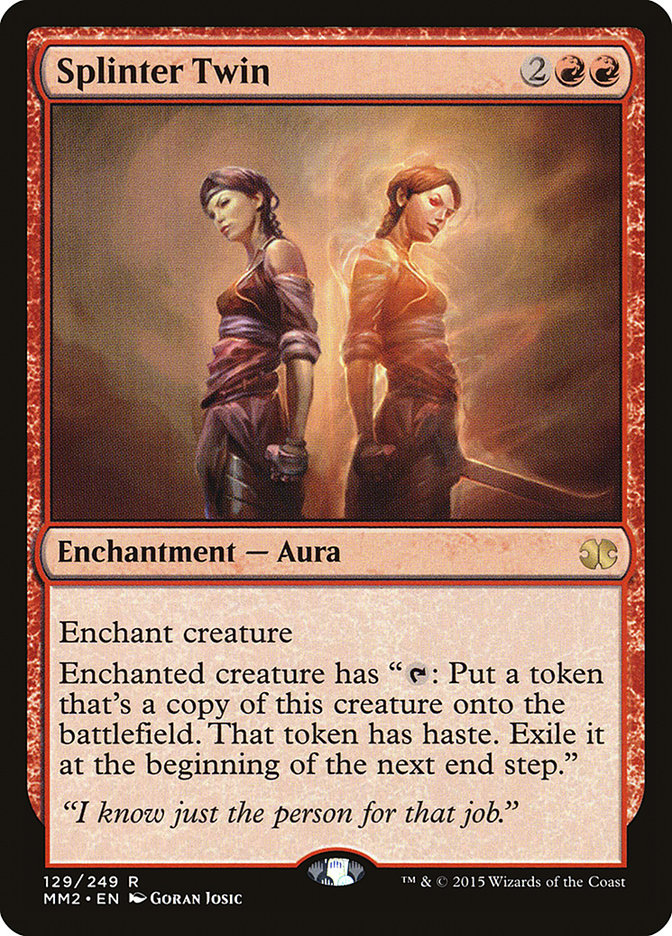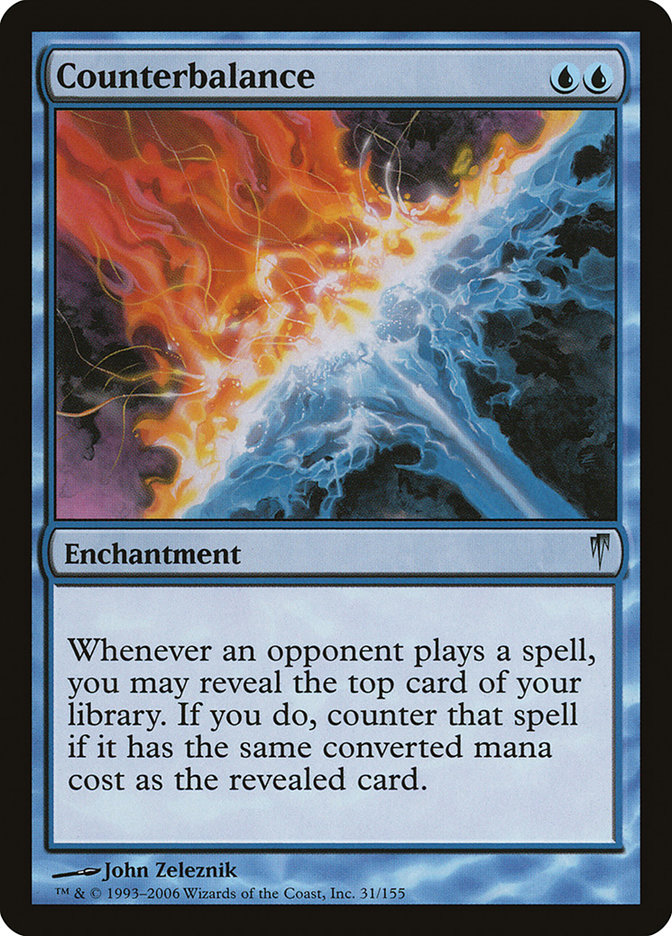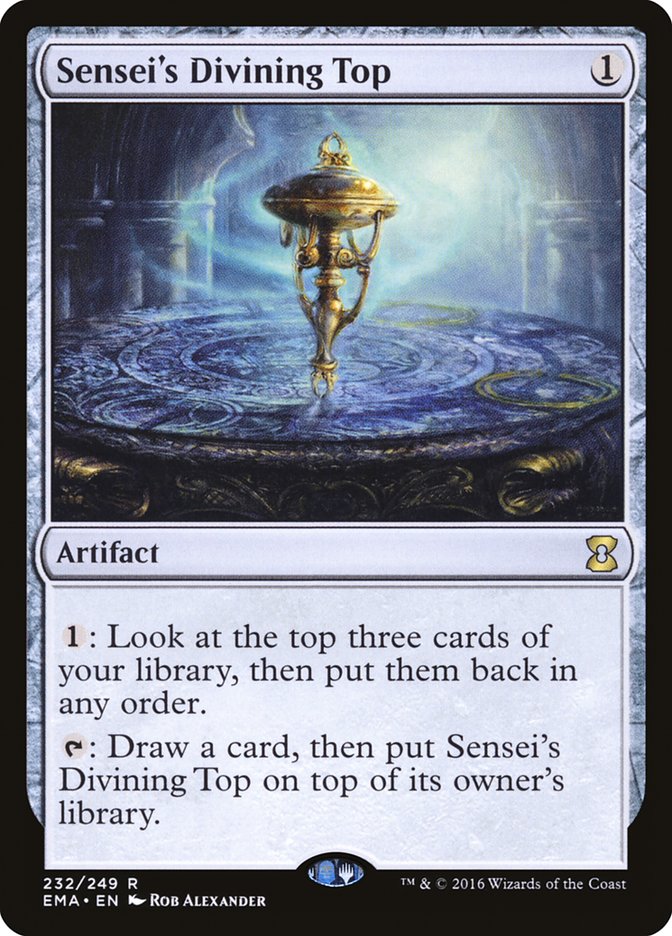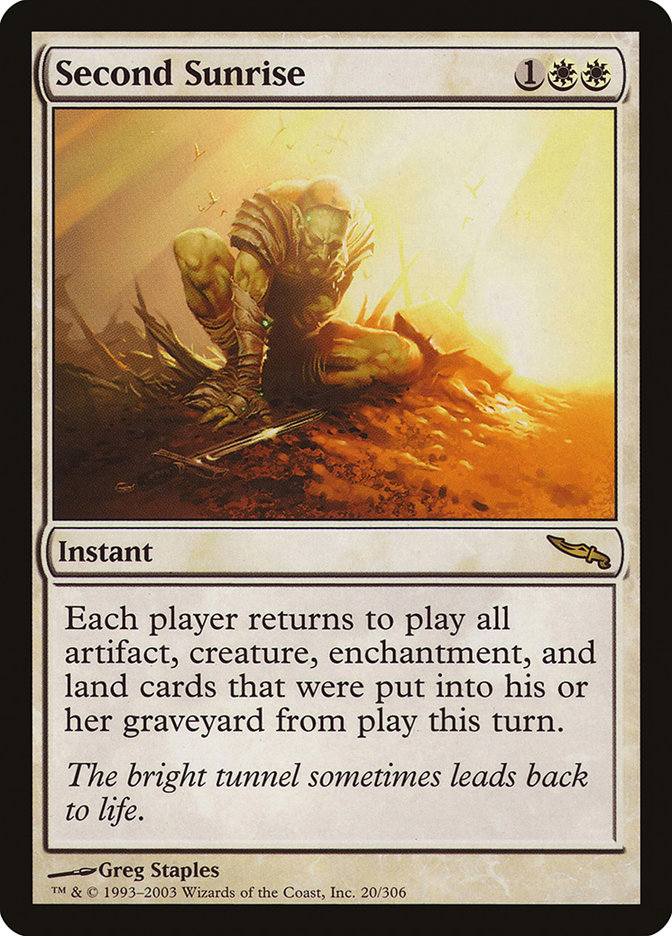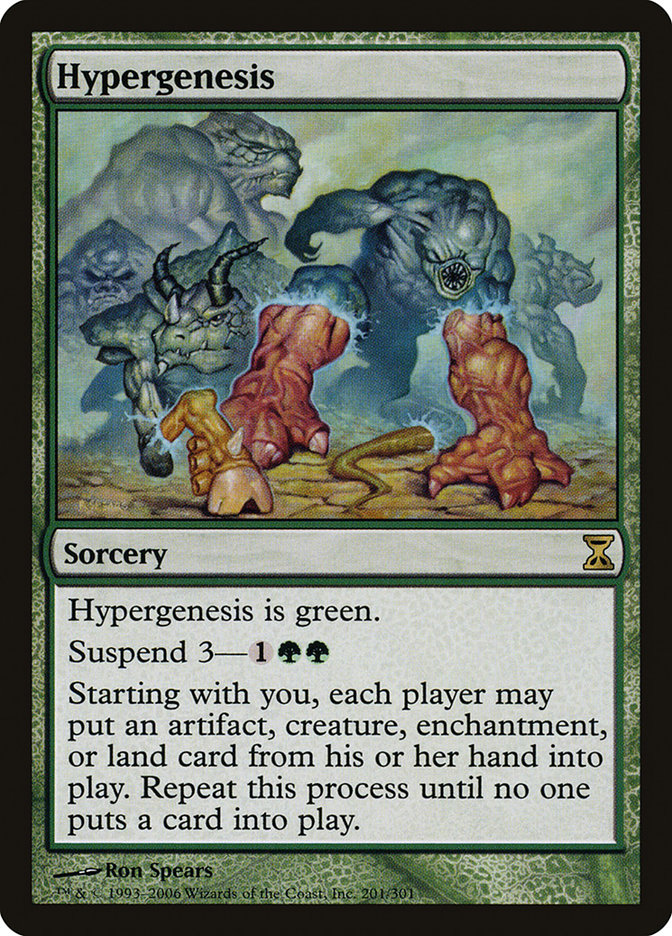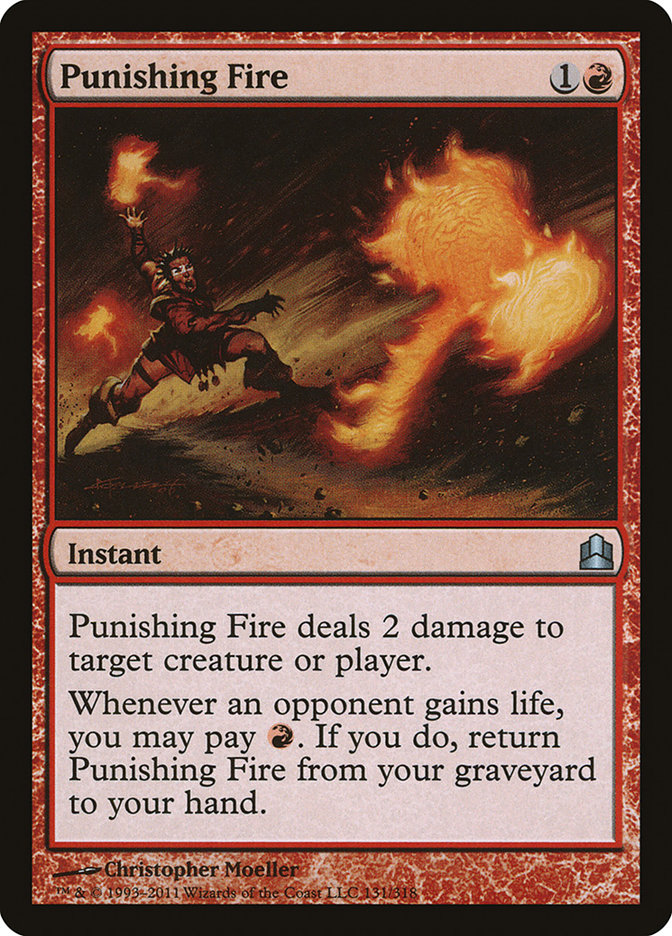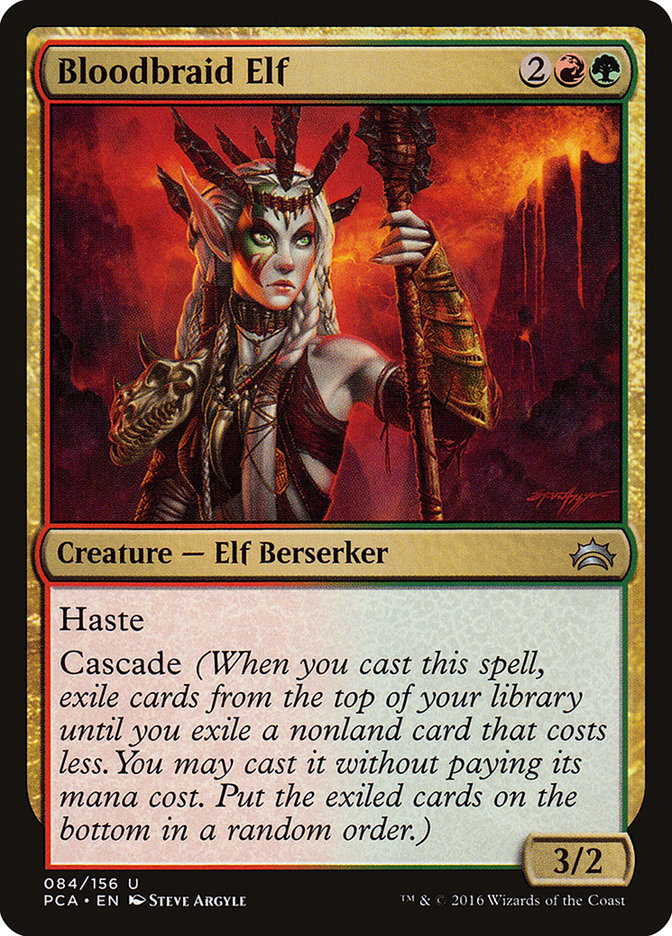Modern is an awesome format with a very diverse mix of fair and unfair decks alike. How was it possible to sculpt a format with three dozen major archetypes?
Meticulous and thoughtful cultivation of the format, producing an extremely rich metagame, despite just 35 cards on the Banned List.
This is not the story of that format.
This is the story of the format underneath it, the format that lurking beneath the surface.
This is what Modern would look like if the banned list had nothing on it.
No Ban Modern (or NBM) has slowly grown a cult following. What once began as a curiosity has been creeping up in popularity all over. Despite just 35 cards more than Modern, No Ban Modern is an extremely different animal. To start to wrap our heads around the format, the natural place to start is with a stroll through the Banned List, considering what strategies might be made possible by each of the cards on it.
The only logical place to begin is with the defining card of the format.
While many other cards on this list are usually going to roll off the tongue of someone listing the most broken cards legal in No Ban Modern, none are as ubiquitous as Mental Misstep. The card is a defining staple in Vintage, and its stock is even higher in NBM, a format without Force of Will and far more one-cost cards than zero-cost cards.
If there were a No Ban Modern Pro Tour, I would guess Mental Misstep would be the most played card by a large margin, appearing in substantially more decks than not, regardless of color or strategy. This makes it tempting to try to dodge one-cost cards, but it’s really hard to find yourself a deck that wouldn’t be meaningfully better with some busted one-cost cards in it.
For instance, consider Chalice of the Void in Eldrazi Aggro, taking advantage of Eye of Ugin for extreme colorless beats.
Eye of Ugin broke in half with the advent of cheap, efficient Eldrazi. In particular, these three spawned several new archetypes that persist to this day in every format, including Vintage.
Eye of Ugin and Eldrazi Temple give Eldrazi Aggro decks an eight-pack of double lands, akin to the Ancient Tomb and City of Traitors used by some Legacy and Vintage decks.
And it’s not just Eye of Ugin we pick up in No Ban Modern. We can actually build styles of Eldrazi Aggro unlike any that have ever appeared in sanctioned tournaments. The key is just how much stronger Mox Opal is No Ban Modern.
While there’s a fairly compelling argument to be made for banning Mox Opal in actual Modern, the card’s power level is through the roof in No Ban Modern, thanks to the unbanning of the artifact lands.
While Affinity is the first sort of strategy that comes to mind when you think of artifact lands, they actually have a wide range of potential applications, especially for decks looking to use Mox Opal as a fast accelerator.
Creatures (30)
- 4 Simian Spirit Guide
- 4 Memnite
- 1 Endless One
- 1 Endbringer
- 4 Eldrazi Mimic
- 4 Reality Smasher
- 4 Thought-Knot Seer
- 4 Matter Reshaper
- 4 Metallic Mimic
Lands (22)
Spells (8)

Metallic Mimic is an amusing addition that wasn’t legal the first time around. I’m not 100% sold on it, but it is interesting. As for Memnite, the idea is to give ourselves more speed early, of course, but also to give us more ways to play Chalice of the Void on Turn 1.
Now, this list looks sweet and all, but what if we didn’t forbid ourselves from playing one-cost cards?
One of the most notorious banned cards of all time; the possibility of Skullclamp being banned was raised on Wizards of the Coast’s website before the card was even released. With a little tweaking, we could embrace a Skullclamp strategy in our Eldrazi Aggro deck if we were so inclined.
Creatures (27)
- 4 Simian Spirit Guide
- 4 Memnite
- 1 Endless One
- 4 Eldrazi Mimic
- 4 Reality Smasher
- 4 Thought-Knot Seer
- 4 Matter Reshaper
- 2 Metallic Mimic
Lands (21)
Spells (12)

Of course, you who else loves a Skullclamp?
The addition of Skullclamp and all the artifact lands you could ever dream of leaves Affinity in a pretty good place. It’s super-fast, deceptively resilient, and easily has access to whatever color of mana it wants for finding cheap interaction to try to survive the first couple of turns against fast combo decks.
Creatures (24)
Lands (16)
Spells (20)

With this much zero-cost action, we may want to consider Erayo, Soratami Ascendant for additional disruption, besides the predictable inclusion of a little bit of permission, discard, or Blood Moons out of the sideboard.
Pithing Needle and Sorcerous Spyglass are both reasonable options to consider as well.
Even at a maindeck level, however, there are a lot of variations potentially worth exploring. For instance, might we want to hybridize Affinity and Eldrazi Aggro even further? My concern there is that Eye of Ugin doesn’t really work with Ravager, and the more we put nonartifact cards into our deck, the less explosive our broken draws will be. Besides, it’s not like “beyond-full-on Affinity” is short on good cards.
Another possibility is the inclusion of Stoneforge Mystic. Skullclamp and Cranial Plating are pretty damn good targets, and it’s not like Umezawa’s Jitte and Batterskull are slouches, either…
…but there’s another white two-drop I’m looking at, even above Stoneforge Mystic.
Auriok Steelshaper reduces the equip costs of Equipment by one. This means both Skullclamp and Cranial Plating can equip for free, at will. Skullclamp is particularly outrageous with Auriok Steelshaper, since you can just keep Clamping creature after creature without spending any mana, with Disciple of the Vault putting in work all the while.
Creatures (24)
- 4 Arcbound Ravager
- 3 Auriok Steelshaper
- 1 Myr Moonvessel
- 4 Disciple of the Vault
- 4 Ornithopter
- 4 Memnite
- 4 Vault Skirge
Lands (16)
Spells (20)

Of course, why stop there?
What if we actually really leaned into the Skullclamp?
With Auriok Steelshaper reducing equip costs to zero, we can Skullclamp as much as we want, so we can end up saving a ton of mana with Etherium Sculptor, letting us cast for free all of the Skullclamps, Springleaf Drums, and one-drop artifact creatures we draw.
Genesis Chamber is absolutely bonkers with Skullclamp, since each nontoken creature we cast gives us an extra 1/1, which translates into a free two cards (on top of the two cards we’ll pick up from clamping the creature we actually played).
With so many ways to abuse Skullclamp, we could turn to Stoneforge Mystic, but the list we’re describing is starting to sound a little too fast for that.
If you’re considering Stoneforge Mystic and you’re not planning on playing fair, Steelshaper’s Gift is an even faster version that is all about the tutor.
Creatures (20)
Lands (11)
Spells (29)

Neither Chrome Mox nor Gitaxian Probe is at its best here, but I wanted to try as much fast mana as possible, and Gitaxian Probe helps get our colored card count up high enough to actually use the Chrome Mox.
Perhaps an even more amusing use of Gitaxian Probe is alongside Street Wraith in a souped-up Dredge deck, making use of Dread Return, Golgari Grave-Troll, and Skullclamp.
It’s hard to fit everything into a Dredge deck, given just how many enablers they’ve printed. For instance, can we make room for Vengevine? Hedron Crab? Cathartic Reunion? Here’s a first attempt:
Creatures (29)
- 4 Golgari Grave-Troll
- 4 Stinkweed Imp
- 4 Narcomoeba
- 4 Street Wraith
- 4 Bloodghast
- 1 Viscera Seer
- 4 Prized Amalgam
- 4 Insolent Neonate
Lands (15)
Spells (16)

Ah, yes, because nothing says “healthy format” like a deck with two Skullclamps in it…
This is starting to get well into ridiculous territory, and we’ve barely scratched the surface. For instance, are we supposed to be looking at Glimpse of Nature / Skullclamp decks?
Glimpse of Nature is best known for its role in Elf combo decks, but it’s also a potential draw engine for Skullclamp combo decks of any variety. It may also shift which creatures we run, with stuff like Glint Hawk and Frogmite starting to look more appealing.
Of course, the easiest home for Glimpse of Nature is still Elf Combo:
Creatures (32)
- 4 Llanowar Elves
- 1 Eternal Witness
- 4 Heritage Druid
- 4 Nettle Sentinel
- 4 Elvish Visionary
- 1 Craterhoof Behemoth
- 4 Deathrite Shaman
- 4 Elvish Mystic
- 1 Reclamation Sage
- 4 Dwynen's Elite
- 1 Shaman of the Pack
Lands (17)
Spells (12)

In addition to both Glimpse of Nature and Skullclamp, Elf Combo gets to pick up Green Sun’s Zenith.
Green Sun’s Zenith can find Craterhoof Behemoth for the win if we’re long on mana. It can also find either half of the Heritage Druid / Nettle Sentinel combo, as well as function as a one-cost mana creature when it finds Dryad Arbor.
With four Elvish Mystic, four Llanowar Elves, four Heritage Druid, and four Green Sun’s Zenith, you might think we were already playing all of the one-drop accelerators we could…
Deathrite Shaman is another Modern banned card that is easy to forget is actually an Elf. Its primary purpose is just making mana; however, the graveyard disruption is definitely decent.
Despite getting to play with sixteen cards that are typically banned, Elves has struggles with its lack of interaction. Are we really winning on Turn 3 enough to justify how much we just let our opponents do whatever they want?
Deathrite Shaman and Green Sun’s Zenith functioning as mana creatures has some implications across the format. For instance, here’s a possible Birthing Pod list:
Creatures (25)
- 2 Birds of Paradise
- 1 Eternal Witness
- 1 Wall of Roots
- 1 Reveillark
- 2 Devoted Druid
- 2 Kitchen Finks
- 2 Viscera Seer
- 1 Phyrexian Metamorph
- 1 Melira, Sylvok Outcast
- 1 Scavenging Ooze
- 1 Strangleroot Geist
- 1 Restoration Angel
- 1 Deathrite Shaman
- 1 Sin Collector
- 1 Varolz, the Scar-Striped
- 1 Voice of Resurgence
- 1 Reclamation Sage
- 1 Blisterpod
- 1 Renegade Rallier
- 2 Vizier of Remedies
Lands (23)
Spells (12)

There’s a lot less pressure on us to play Birds of Paradise and Noble Hierarch. Interestingly, Green Sun’s Zenith has us looking for combo pieces that are part green.
While Melira, Sylvok Outcast and Kitchen Finks are naturally green, Viscera Seer is not so lucky. To this end, it might be interesting to try one copy of Varolz to be able to Green Sun’s Zenith for a sacrifice outlet.
While we’re looking at Green Sun’s Zenith, we might want to consider using it and Summer Bloom to super-charge an Amulet of Vigor deck. Additionally, we get to upgrade our Serum Visions into Ponders.
We could use Preordain as well, if we were so inclined, but Ancient Stirrings seems better (though nine or more isn’t out of the question).
Putting it all together also reveals a powerful secondary synergy that has never been available to Modern Amulet decks…
Creatures (7)
Lands (27)
Spells (26)

In addition to all of the usual Primeval Titan combos, we get to incorporate the powerful Dark Depths / Thespian’s Stage combo.
Dark Depths was already banned in Modern by the time Thespian’s Stage was printed because of its combo with Vampire Hexmage. Thespian’s Stage has the added strength of being a land, meaning Primeval Titan can actually search up both it and the Dark Depths. Then, just activate Thespian’s Stage and turn it into a Dark Depths. It won’t have any counters, which means we’ll get a 20/20.
While we’re looking at making 20/20s, we should also look at a dedicated Dark Depths deck. One possibility would be to move towards some kind of Life from the Loam deck. Another might be to take advantage of Knight of the Reliquary and Sakura-Tribe Scout’s synergy with the Dark Depths combo and bounce lands, like Selesnya Sanctuary, as well as Retreat to Coralhelm.
Going the other way with the Dark Depths combo, we could ditch green entirely and go back to Vampire Hexmage U/B.
Creatures (4)
Lands (24)
Spells (32)

With four Thoughtseize, four Inquisition of Kozilek, and four Mental Misstep, this is a crazy amount of disruption for a deck with twelve cantrips, eight ways to combo the Dark Depths, and eight ways to tutor it up. This would be on my short list for the first decks I’d want to test.
The Gitaxian Probe / Ponder / Preordain package is going to find many homes, as it’s just such an efficient way to streamline a list and maximize its consistency. For instance, consider how different an Infect deck might look in No Ban Modern, thanks to Blazing Shoal.
Blazing Shoal combos with any red card costing nine or more for a one-hit kill when cast on a creature with Infect or double damage. With the ability to kill in one hit, there’s more need to mess around with green Giant Growths, letting us return to the John Stolzman style of Infect popularized by Sam Black at the first Modern Pro Tour.
Creatures (4)
Lands (18)
Spells (38)

In addition to all the usual suspects, this list gets to take advantage of Dig Through Time as an additional tutor, digging hard for whichever parts of the combo we might be missing.
When setting up a specific combo, Dig Through Time is the more effective option, but when all we want is raw card quantity, Treasure Cruise draws more for half the mana.
Treasure Cruise is going to show up in a variety of fair decks as well, but for an example of how it might get used “unfairly,” we turn to Storm:
Creatures (6)
Lands (16)
Spells (38)

Not only does Storm pick up playsets of Gitaxian Probe, Ponder, and Preordain alongside its Treasure Cruises, it’s also much more Ritual-laden, thanks to the most skill-testing and sophisticated of rituals of all time, typically piloted by only the cunning and charismatic of Storm players.
Alternatively, we could replace the red rituals with another combo or two…
Splinter Twin was a mainstay in Modern from the format’s inception until it was eventually banned last year.
Creatures (5)
Lands (17)
Spells (38)

With a slower combo than most, Splinter Twin is likely going to need to play a bunch of control elements. Permission and removal are part of it, but we’re also going to want to look at lock components like Blood Moon and Counterbalance / Sensei’s Divining Top.
One of the most obnoxious combos in Magic’s history, Counterbalance Top is extremely well-suited to No Ban Modern for so many of the same reasons that Mental Misstep is so insane.
We might as well continue our journey through Ponder / Preordain-fueled combo decks. Next stop: Eggs!
Second Sunrise was part of one of the most boring to watch combo decks of all time. Unfortunately, we really don’t gain much of anything else from the move to No Ban Modern.
Lands (14)
Spells (46)

What else would we play?
Pia’s Revolution?
Last, but not least, among combo decks…
Hypergenesis was banned from Day 1, as the synergy with cascade is just too broken. The only drawback? We can’t play spells that cost two or less.
Creatures (25)
- 4 Simian Spirit Guide
- 2 Progenitus
- 3 Terastodon
- 3 Emrakul, the Aeons Torn
- 3 Urabrask the Hidden
- 4 Chancellor of the Annex
- 3 Griselbrand
- 3 Ashen Rider
Lands (20)
Spells (15)

Unfortunately(?), we really can’t play more Turn 1 fast mana, or else it’d be nice to run Chancellor of the Tangle for even more Turn 1 kills. As it stands, we’re looking pretty good for the Turn 3 kills, with Turn 2s whenever we draw Simian Spirit Guide. While we are especially vulnerable to Chalice of the Void, we’re unnaturally good against Mental Misstep.
As in Legacy, there are basically two main styles of fair decks: blue with permission and black with discard (with plenty using both). The reason is simple. With so many ultra-fast combo decks, there’s a real shortage of interaction fast enough to actually fight back.
Creatures (16)
- 1 Eternal Witness
- 4 Tarmogoyf
- 1 Kitchen Finks
- 4 Bloodbraid Elf
- 1 Scavenging Ooze
- 1 Huntmaster of the Fells
- 4 Deathrite Shaman
Lands (23)
Spells (21)

Jund actually picks up a surprising number of banned cards, with Deathrite Shaman and Green Sun’s Zenith, as discussed earlier, as well as two of the most modest cards on the banned list, Punishing Fire and Bloodbraid Elf.
Punishing Fire provides late-game inevitability with Grove of the Burnwillows, which could also play an important role in a Dark Depths / Thespian’s Stage / Life from the Loam deck. I’m just concerned about how incredibly slow this end-game is. There are going to be plenty of times we’re “winning,” and then, over the course of the ten turns or so we need, our opponent might assemble a backup plan or just drop too many big threats in the same turn.
As for Bloodbraid Elf, it’s just so much worse when the format is this broken. One silver lining is that Dryad Arbor means that even if we reveal a Green Sun’s Zenith, we still get to play it, even though BBE usually misses with X spells.
In addition to Jund, we might also look at Abzan, B/G, and Sultai, if we’re looking to play that kind of midrange deck. Alternatively, if we want to play U/X, we might consider Delver:
Creatures (13)
Lands (16)
Spells (31)

Options include slanting more burn-heavy with Goblin Guide, adding green for Tarmogoyf, or possibly black for Tasigur or Gurmag Angler. Finally, we could actually slot the Counterbalance / Top combo into some kind of a tempo deck for added disruption.
Alternatively, might just want to save Countertop for U/W Miracles or some kind of Stoneblade deck. For instance:
Creatures (8)
Planeswalkers (2)
Lands (19)
Spells (31)

Getting to play Umezawa’s Jitte is a big game, but we might still want to use a Sword of Feast and Famine or a Sword of Fire and Ice. If we somehow end up with room for a Squadron Hawk package, we might also consider one Skullclamp (perhaps with Blinkmoth Nexus).
The real story, however, is building a home for our hero:
While Jace, the Mind Sculptor is better than all, he is, admittedly, a little slow for a format this broken. Nevertheless, like Legacy and Vintage, I think we’re going to see Jace as top dog in games that are at risk of playing out “fairly.”
On the whole, No Ban Modern is a crazy format, busted into dozens of ways. Which ways are the most busted? That is what this format is really about. The rules of engagement are just so different from those of Modern, Legacy, or Vintage. There is brokenness everywhere, but it’s not just goldfishing.
If you’re in the market for a lawless format that breaks all the rules, you might want to check out No Ban Modern. If enough people play, the format might end up “solved,” but despite a couple of years of competitive play, no one has cracked the code yet.
I’ve got a feeling we’re going to be seeing more and more people try…


